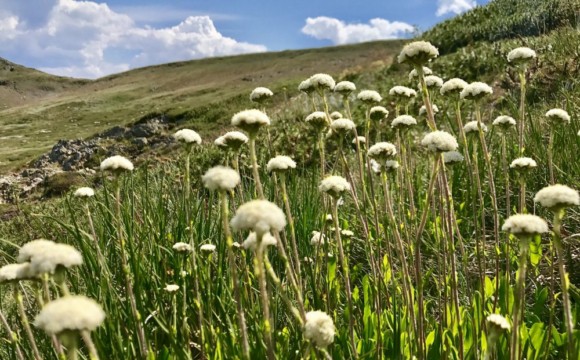
Banner image: Craspedia leucantha. Courtesy of Casey Kirchhoff
As the world’s climate continues to warm, the future prospects for many plants and animals is a growing concern.
Tracking and predicting the likely outcome from a warming world isn’t easy, especially in remote areas where access to closely observe and monitor species is limited.
Fortunately, researchers now have an easy to use tool that allows them to predict likely outcomes from expected climatic challenges.
The ARDC-supported Biodiversity and Climate Change Virtual Laboratory (BCCVL) is a ‘one-stop modelling shop’ that simplifies the process of biodiversity and climate change modelling.
It allows users to conduct sophisticated species distribution modelling and experiments, such as climate change projections, within short timeframes. It can also be used for other areas including biosecurity, agriculture, infectious and vector-borne diseases or instances when data is put into analytical workflows to assess ecological and environmental challenges.
When Casey Kirchhoff, a PhD candidate at the University of New South Wales School of Biological, Earth and Environmental Science, wanted to study the expected impact of global warming on a selected species of alpine wildflowers, she turned to the BCCVL.
Research shows that the alpine zone of Australia’s Snowy Mountains is being affected by climate change, including a decrease in the duration and depth of the seasonal snowpack.
“I’ve been going to the Snowy Mountains my whole life and was aware that climate change was happening,” Casey said.
Her research focused on a small number of alpine plant species that are endemic to the area; many are dependent on snow cover for their survival.
Casey used the BCCVL to assess the future prospects of these species under different climate change scenarios.

It showed the climatically viable habitat of all 19 plant species shrinking significantly, severely limiting survival potential by 2055. On a more positive note, a few could continue existing if they were able to migrate to a higher elevation. And two species could end up with a slightly larger habitable area in the future.
However, the majority of species were projected to completely disappear by 2055.
The results of her research was recently published in Australasian Plant Conservation.
“The BCCVL was not only useful for conducting my research, it is also a great learning tool for teaching second year students,” Casey said.
Categories
Research Topic
Related Case Studies






